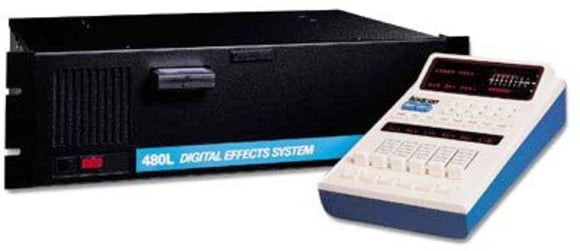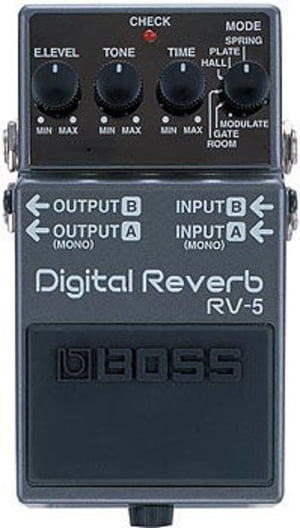4. Modern Reverb Devices
The reverb sound heard on contemporary records is almost always digitally generated. The year 1978 represents an approximate watershed between retro and modern studio sound, and one of the reasons (alongside digital recording itself) is the advent of digital reverb at around that time.

Most digital reverb is generated by combining very many separate delays in a way that was simply beyond the range of analogue electronics. The original aim was to create convincing emulations of natural hall reverb, and early digital units were certainly much more successful in this regard than existing plate reverb units. The Lexicon 480L set a benchmark that stood for fifteen years, and digital reverb quickly became standard in all but the most basic studios. In very recent years however, more sophisticated techniques for modelling the reverb characteristics of real spaces have raised the standard still further, and the comparatively harsh sound of early digital reverb has itself acquired a little of the retro status of plate/spring reverb!
The technology of the digital processing revolution has found its way into three main types of reverb solution:
19 Rack

TC Electronic M3000 19" Dual-Engine-Prozessor
The Lexicon 480L originally cost more than most cars, but one of the basic rules of modern technology is that processing gets steadily cheaper and cheaper. By the early 90s, digital reverb was within reach of home-based project studios, usually in the form of 19 rack-mount FX processors.
FX Pedal
Guitarists soon wanted a way to use studio-quality digital reverb on stage. The characteristic 80s big hair guitar sound is largely a product of digital reverb a very different sound from spring reverb. Bands such as U2 and Simple Minds would have sounded quite different without digital reverb (and of course, digital delay). While big-league players could afford to take a Lexicon on the road, digital reverb for the masses arrived in the form of compact pedals from companies such as BOSS and Digitech.

Boss RV-5 Digitalreverb
Pedals remain central to most guitarists live setups. Nowadays both pedals and rack units generally offer emulations of classic spring and plate reverb sounds, as well as the hall sound that became so important to 80s rock guitar.
Plug-Ins
Like most aspects of music technology and recording, digital reverb has escaped the confines of dedicated hardware. As recently as the late 90s, most commercial recording studios used dedicated recording hardware while software-based recording was an interesting new phenomenon. Today, this situation has reversed almost completely. Cutting edge developments in music and recording technology usually result first and foremost in new software, even if they also later find their way into hardware. Reverb is no exception to this rule convolution technology has brought a new breed of software reverbs which effectively sample real acoustic spaces, giving stunning realism, although generally at the cost of flexible editing.




